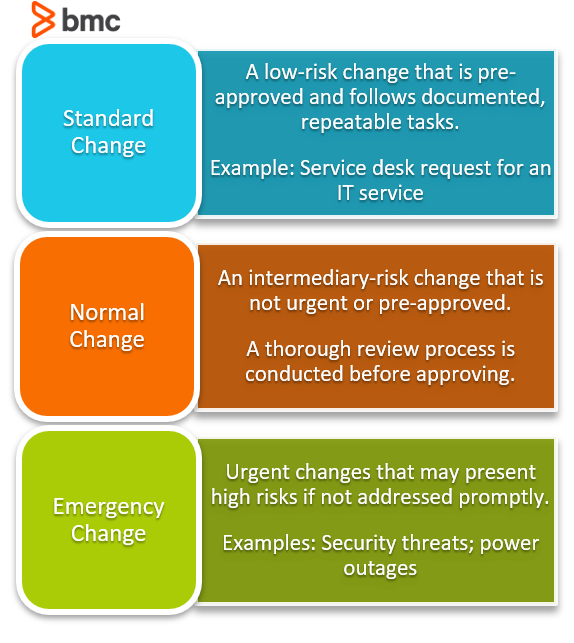Change Management Job Description: Roles and Responsibilities


Change enablement, also known as change management, is at the core of ITIL® service transition. The maturity of an organization depends on how well it facilitates change requests (CR) in response to end-user, technical, functional or wider business requirements.
Careful change management helps reduce the risk exposure and disruption proactively when new changes are instituted within your organization's operations and technologies.
ITIL provides an effective framework guideline to conduct change enablement and management activities. In this article, we will discuss the key roles and responsibilities involved in change management according to ITIL guidelines. Even if you don’t adhere to the ITIL framework, these roles help clarify your change management processes.
We'll look at:
Change managers are employees leading the change management programs. These leaders have a background in conducting structured change efforts in organizations.
A certification verifying change management skill is typically desired for a change manager, who will be involved in the following key activities:
This is the team that controls the lifecycle of change across all processes as specified within ITIL Service Transition function. The Change Advisory Board involves high-level members from different domains, including information security, operations, development, networking, service desk, and business relations, among others.
Together, the CAB is responsible for the following activities:

A CAB can face numerous criticisms, threats, roadblocks, and problems. Change is not easy and often is not welcome. Rather than be frustrated, you can disrupt, disarm, and plan an effective response.
Don’t create a CAB that has too many stakeholders, too many meetings, or that does not prioritize efficiency. You don’t want to create more bureaucracy and conflict points.
Ensure the CAB area of responsibility is not overly broad. If you have to manage too many areas, you will diffuse your effectiveness. Have a clear focus area and resist attempts to expand or blur it.
Be careful how your CAB looks at risk. Risks associated with change need to be balanced against the risks of not changing or delaying change. Consider risks to customers, your competitiveness, and future innovations. Rather than considering risk as a stop sign, look for ways to mitigate risk.
The ECAB is a smaller body within the CAB that deals specifically with emergency changes. (Emergency changes are one of three change types according to ITIL.) When the emergency change request is raised, the change manager must conduct a thorough analysis and evaluation before finalizing a decision together with the CAB.
A dedicated ECAB body ensures that the necessary resources and expertise within the CAB is available to make the right decision at the right time. The ECAB is responsible for performing activities similar to the CAB but focused primarily on emergency changes. These include:
The change process owner can have overlapping responsibilities with the ITIL Process Owner, specifically within the function of change management. (For this reason, a separate change process owner may not be required for small and midsize business organizations.)
The change process owner is responsible for defining and supporting the overall process involved in change management. The activities include:
Change management functions are distributed in teams across departments and ITIL functions. Individuals within these teams may be responsible for managing change within a specific organizational unit considering their expertise, skills, and background.
Specific change management teams may consist of three roles:
The roles of a change manager vs. a project manager are distinct, focusing on different facets of supporting improvements and organizational change. That said, they are often complementary.
A change manager focuses on people and teams and how they can move from the current state to one that is better for the future. They support people, understand potential impacts of change, and develop communications, training, and support to facilitate adapting to what is new. Ultimately, they promote the adoption of valuable changes with minimal resistance, good communication, and positive outcomes.
As the change manager focuses on the who and why, project managers are concerned about the what and how. They focus on the practical issues of project goals, scope, schedules, budgets, standards, and resources. They manage stakeholder expectations and coordinate people and teams to achieve success on a specific project.